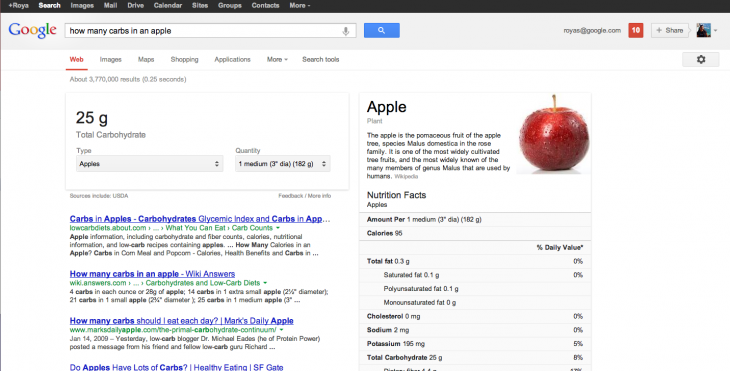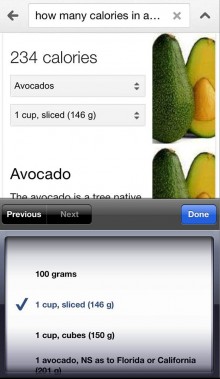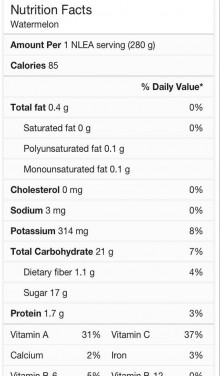
Weather data, calculations, word definitions…Google has been providing answers to questions directly in its search results for a while already, minimizing the amount of clicks you need to carry out to get, well, an answer.
Now, the Internet giant is also making nutrition information available directly in the search results.
So, for example, if you want to know how much carbohydrates are in an apple, you can see instantly.

The results cover more than 1,000 foods, including fruit, vegetables, meats and more complex meals such as burritos.
“This new nutritional information builds on our work on the Knowledge Graph, which brings together all kinds of information from across the web that wasn’t easily accessible,” explains Ilya Mezheritsky, Product Manager at Google. “The graph helps us connect things that are related, even in cases when those foods have a completely different sounding name from what you asked.”
Now, if you want to know some basics about your lunch, you can use the in-built features on your mobile, with the microphone serving (pardon the pun) as an easy way to ‘speak’ your nutritional request, with answers verbalized back to you. This may relate to things like carbs, nutrients and calories.


Google’s Knowledge Graph launched globally back in August last year, a project the company says will lead to billions of real-world ‘things’ being displayed on its search results page.
Back in November, Google started displaying medicinal information in its search results too, with key facts such as drug class, related medications, brand names, side effects, pregnancy risk and so on displayed down the right-hand side of the page.
The nutrition-based data will be going live shortly in English though it will be rolling out in the US first – over the next ten days or so. More languages and food will be added over time too, and hopefully more territories.
Feature Image Credit – Thinkstock
Get the TNW newsletter
Get the most important tech news in your inbox each week.




